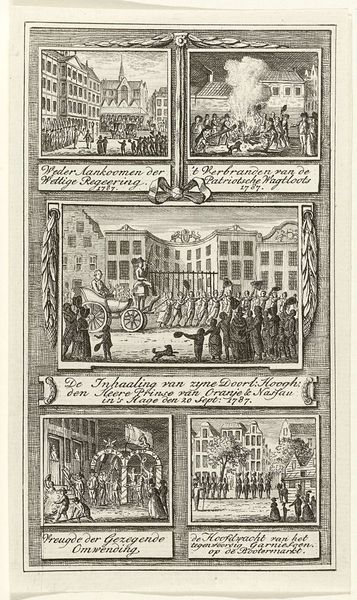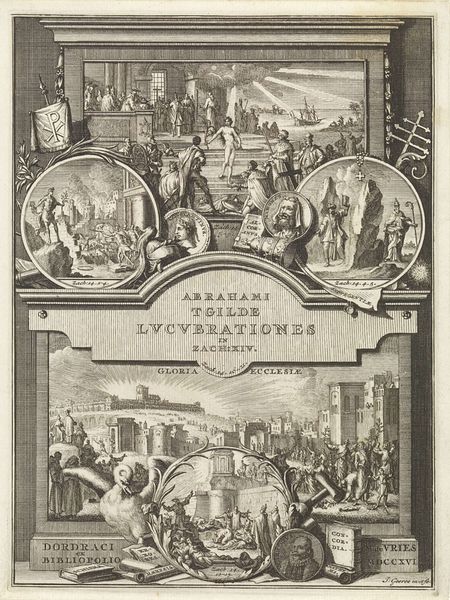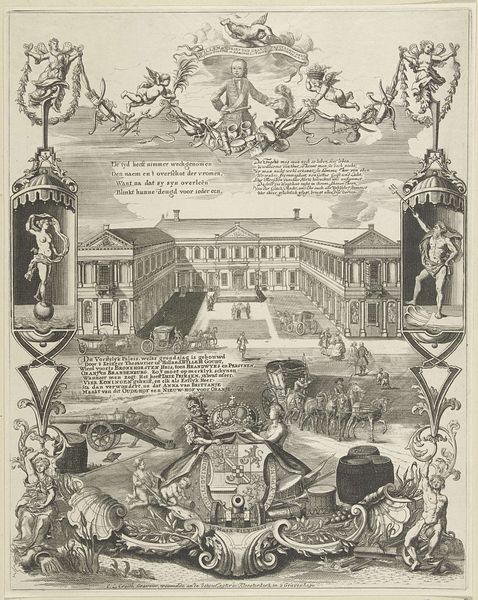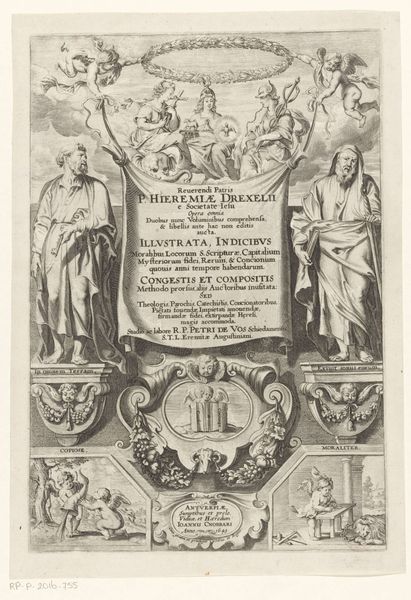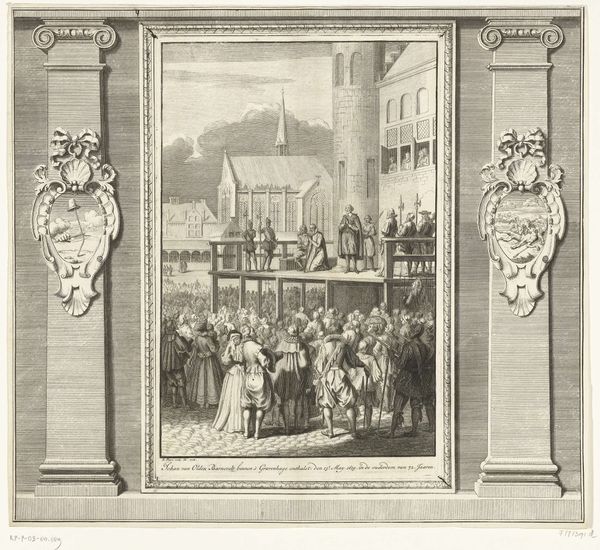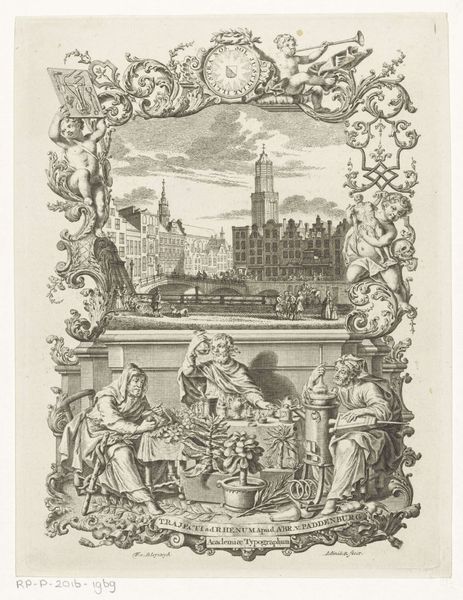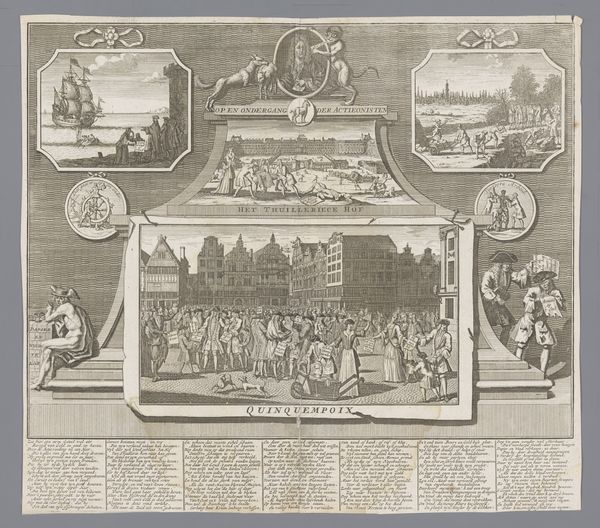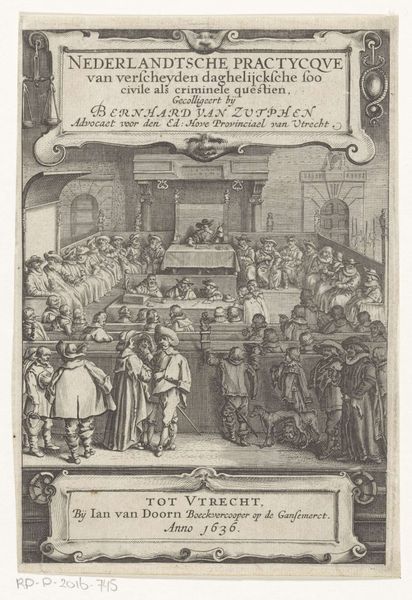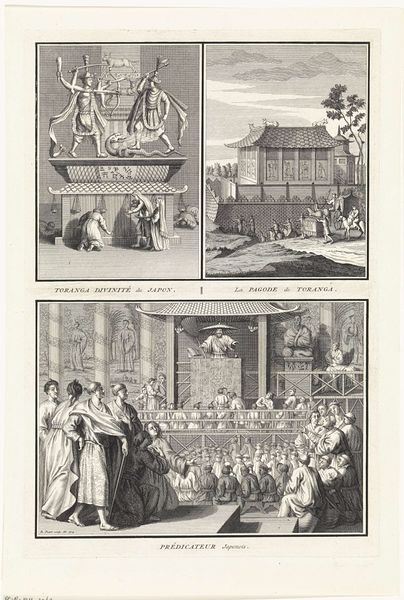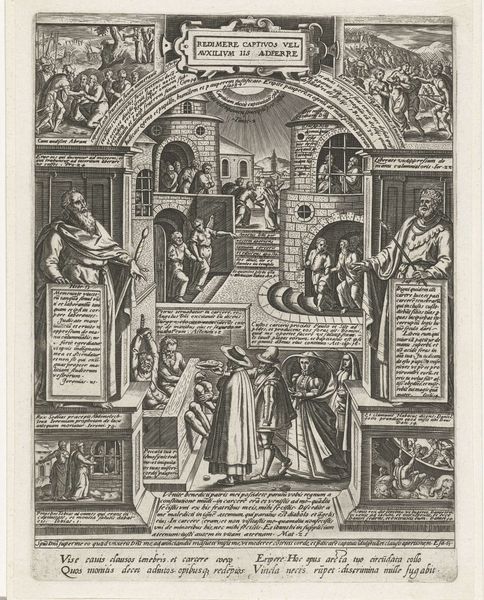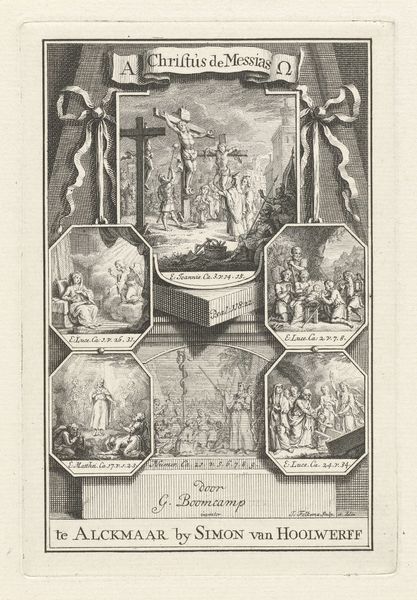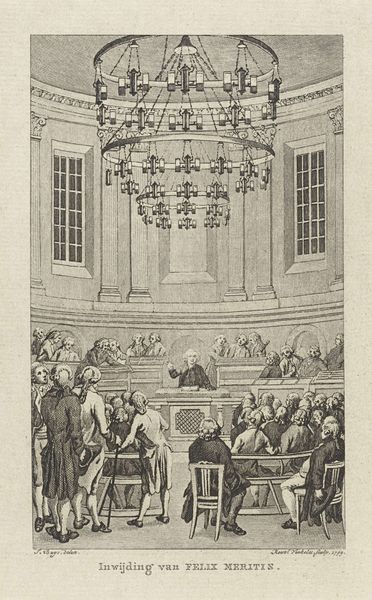
Scènes uit geschiedenis van Joodse geloof en het Oude Testament in omlijsting 1681 - 1708
0:00
0:00
francoisvanbleyswijck
Rijksmuseum
print, engraving
#
narrative-art
#
baroque
#
dutch-golden-age
# print
#
landscape
#
cityscape
#
history-painting
#
engraving
Dimensions: height 177 mm, width 136 mm
Copyright: Rijks Museum: Open Domain
Curator: Oh, look at this one. It's a print titled "Scènes uit geschiedenis van Joodse geloof en het Oude Testament in omlijsting"—scenes from the history of Jewish faith and the Old Testament in a frame— dating from around 1681 to 1708, attributed to François van Bleyswijck. Editor: Intricate! A bit overwhelming at first glance, like stepping into a bustling marketplace. There are so many mini-scenes within that frame. It gives off a deeply historical vibe, something both studied and imagined. Curator: The Dutch Golden Age was wild for narrative art. These frames around each scene almost act like stages, or little proscenium arches, containing biblical dramas. Each encapsulated tableau adds another layer of story-telling! Editor: It's like an encyclopedia in image form, a structured retelling intended for the consumption of Dutch elites. The cityscape seems to serve more than just decorative functions. What historical realities or political climates influenced Bleyswijck, considering his focus on biblical narratives? Curator: Oh, without a doubt, you can feel the Baroque exuberance. And that architectural center image – a temple bustling with figures - really pulls you in. Those serene circular vignettes surrounding it add depth. Makes me want to step right in! Editor: I’d agree about the appeal, but there's a certain idealization happening here. It is important to deconstruct that and see the underlying power structures in how histories, particularly religious histories, are visualized and framed during that time. How does this composition negotiate faith and historical accuracy in the social-political sphere? Curator: Food for thought! It feels very alive, brimming with both precision and expressive spirit, doesn’t it? Editor: It makes you wonder about the dialogues being constructed, doesn't it? It's a powerful thing, representing complex histories and identities. Curator: Right. Perhaps we are just beginning to hear what it wants to say.
Comments
No comments
Be the first to comment and join the conversation on the ultimate creative platform.
